By Stacey Rice, logistics coordinator
Sunday marked the official start of spring. Flowers are blooming, leaf buds are opening, and temperatures are warming. With that, millions of travelers are beginning to think about their summer plans, including Adventure Treks families looking to book cost-effective plane tickets for their child’s trip! But what day of the week is the best day to buy? And how far in advance will you find the best price?
A report published in December 2015 suggests that while some days of the week are better than others (with Friday being the worst), there is really no one best day to purchase cheaper plane tickets, and travelers should grab a good deal when they see one. The report also suggests that for travel within North America, the best time to buy is roughly 57 days in advance.
Timing is everything
Years ago, most airline executives would spend Mondays analyzing the number of seats sold over the weekend. They would then create advertising campaigns based on those numbers, and consumers could always count on seeing the lowest airfare prices of the week published in Tuesday’s papers. As Internet ticket-buying sites emerged, this practice continued, and low airfare prices would sometimes spill over into early Wednesday morning. Now, it seems, those days are long gone.
The report, “Preparing for Takeoff: Air travel outlook for 2016,” is a joint effort by Expedia and Airlines Reporting Corp. (ARC) to look at global airline data annually and to forecast the year ahead. Online giant Expedia and ARC (which processes tickets bought through traditional travel agencies) analyzed more than 10 billion passenger flights from October 2014 to October 2015.
While Tuesday remains a relatively decent day to purchase lower-cost tickets (and is still usually the best weekday), you’re more likely to find the best prices on Saturday and Sunday. But shy away from Fridays, as this is when business travelers are booking last-minute tickets and fares are typically most expensive. Sarah Waffle Gavin, who writes for Expedia’s travel blog Viewfinder™, summarized the report in her December 10, 2015 blog “Air Travel Trends for 2016”:
“Of course there are mitigating factors. Most analyses show low air ticket prices on weekend days because that’s when many leisure travelers purchase tickets (and leisure tickets are much cheaper than business tickets). What’s more, airlines change their fares multiple times a day. With all of this in mind, Expedia and ARC advise that travelers who find a fare that looks like a great deal to purchase it, regardless of the day of the week.”
Be an early bird
The report also suggests that booking early is often the biggest factor in scoring low-cost tickets. “The sweet spot is about two months before departure. The study found the lowest-priced economy tickets for a flight within North America were sold, on average, 57 days before departure,” said Scott McCartney in his review of the report in The Middle Seat column, published in the Wall Street Journal on December 11, 2015, “The Worst Day to Buy a Plane Ticket.”
Waffle Gavin further points out that “the research indicates that air ticket prices purchased around this point yield a 10 percent savings versus the average fare.”
In McCartney’s column, he cites Patrick Surry, chief data scientist at Hopper (the only travel app to make Apple’s Best Apps of 2015 list), as seeing “benefits in buying even earlier than 57 days on domestic trips. On many flights tracked by Hopper, the cheapest prices for domestic U.S. trips are about 80 days before departure.”
Regardless of whether tickets are booked two or three months out, the experts tend to agree that this time period often produces the cheapest options, because airlines typically begin their price-cutting measures during this time.
Parting tips
With the first 2016 Adventure Treks opening day roughly only 3 months away, now’s the time to begin the search. These days, sales are short-lived and often restrictive. While looking for the best deal possible, be wary of sales that seem too good to be true; they usually are. Rick Seaney writes a tips and advice blog for tracking site FareCompare. In his January 18, 2016, blog “Cheapest Days to Fly and Best Time to Buy Airline Tickets,” he offers these tips: compare prices and set airfare alerts. And expand the search. “Bigger airports (particularly hubs) often have cheaper airfares. Compare prices from your hometown airport as well a larger airport and you may find a longer drive is worth it,” he said.

 Recipe: Pesto Pasta
Recipe: Pesto Pasta Recipe: Thai Fusion Quesadillas
Recipe: Thai Fusion Quesadillas Recipe: Burrito
Recipe: Burrito Recipe: Chicken Curry
Recipe: Chicken Curry Backpacking Spice Kit
Backpacking Spice Kit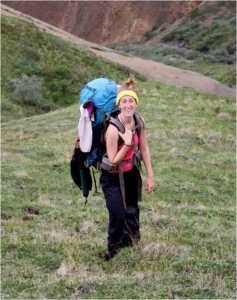
 You don’t have to be a professional photographer to capture a fantastic shot. What’s more, you don’t even have to have a fancy or expensive camera. Today’s point and shoot cameras come equipped with systems that rival more expensive options (think digital SLRs), so you’ve got what you need to create a beautiful photograph. The next time you head out on an adventure, just keep these tips in mind and you’ll be creating magazine-worthy images before you know it.
You don’t have to be a professional photographer to capture a fantastic shot. What’s more, you don’t even have to have a fancy or expensive camera. Today’s point and shoot cameras come equipped with systems that rival more expensive options (think digital SLRs), so you’ve got what you need to create a beautiful photograph. The next time you head out on an adventure, just keep these tips in mind and you’ll be creating magazine-worthy images before you know it.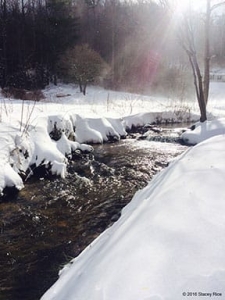 Perspective
Perspective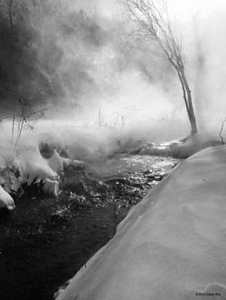 Always think about what will make the photograph look interesting and different. Below, in the image to the left, there’s a pretty contrast between the snow and the creek. But it’s just an average picture… until the wind picked up. Try to include an element of awe or surprise, and you’ll instantly add a wow factor to your photograph. Filters also help add creative elements to an image. This scene was originally shot in color, but was switched to black and white to add a more powerful contrast. Most cameras and smartphones have a variety of built-in filters. Don’t be afraid to experiment. Take the picture in the normal setting as well in case you’re not sure you’ll like the final effect.
Always think about what will make the photograph look interesting and different. Below, in the image to the left, there’s a pretty contrast between the snow and the creek. But it’s just an average picture… until the wind picked up. Try to include an element of awe or surprise, and you’ll instantly add a wow factor to your photograph. Filters also help add creative elements to an image. This scene was originally shot in color, but was switched to black and white to add a more powerful contrast. Most cameras and smartphones have a variety of built-in filters. Don’t be afraid to experiment. Take the picture in the normal setting as well in case you’re not sure you’ll like the final effect.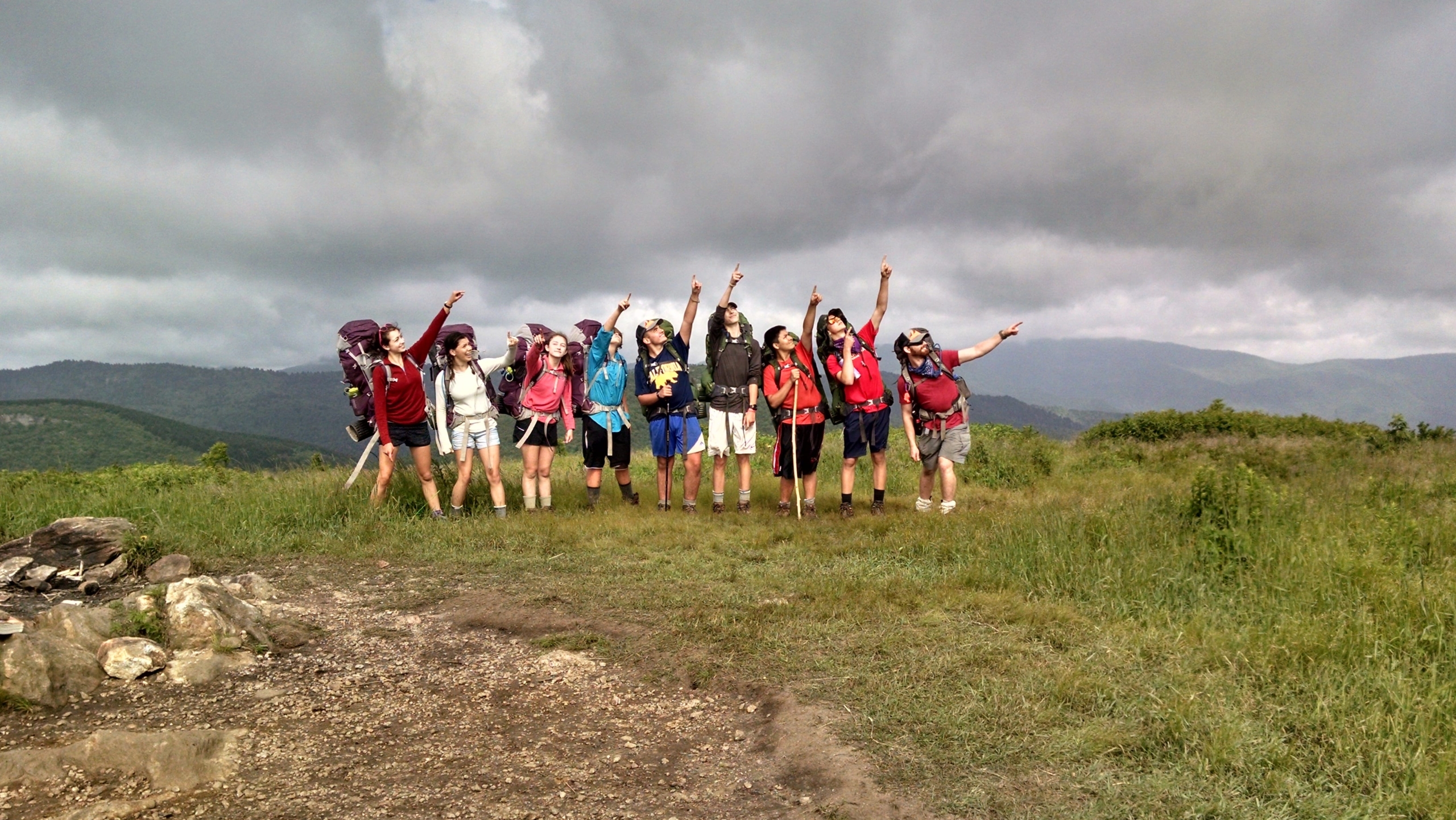 Though the highest summit in the Appalachians, Mt. Mitchell, tops out at just under 6,700 feet, during their formation more than 300 million years ago, the Blue Ridge Mountains were among the highest peaks in the world. On the Blue Ridge Explorer trip, students will get to hike in the Shining Rock Wilderness, the largest protected wilderness area in the state. They’ll traverse several peaks over 6,000 feet, including Black Balsam Knob (6,214 feet, pictured), from which they’ll be able to view several other impressive summits like Mt. Mitchell, 45 miles to the northeast, on clear days. What’s most awe-inspiring, however, is the panoramic view of the lush, vividly green rolling hills of the Black Balsam range.
Though the highest summit in the Appalachians, Mt. Mitchell, tops out at just under 6,700 feet, during their formation more than 300 million years ago, the Blue Ridge Mountains were among the highest peaks in the world. On the Blue Ridge Explorer trip, students will get to hike in the Shining Rock Wilderness, the largest protected wilderness area in the state. They’ll traverse several peaks over 6,000 feet, including Black Balsam Knob (6,214 feet, pictured), from which they’ll be able to view several other impressive summits like Mt. Mitchell, 45 miles to the northeast, on clear days. What’s most awe-inspiring, however, is the panoramic view of the lush, vividly green rolling hills of the Black Balsam range.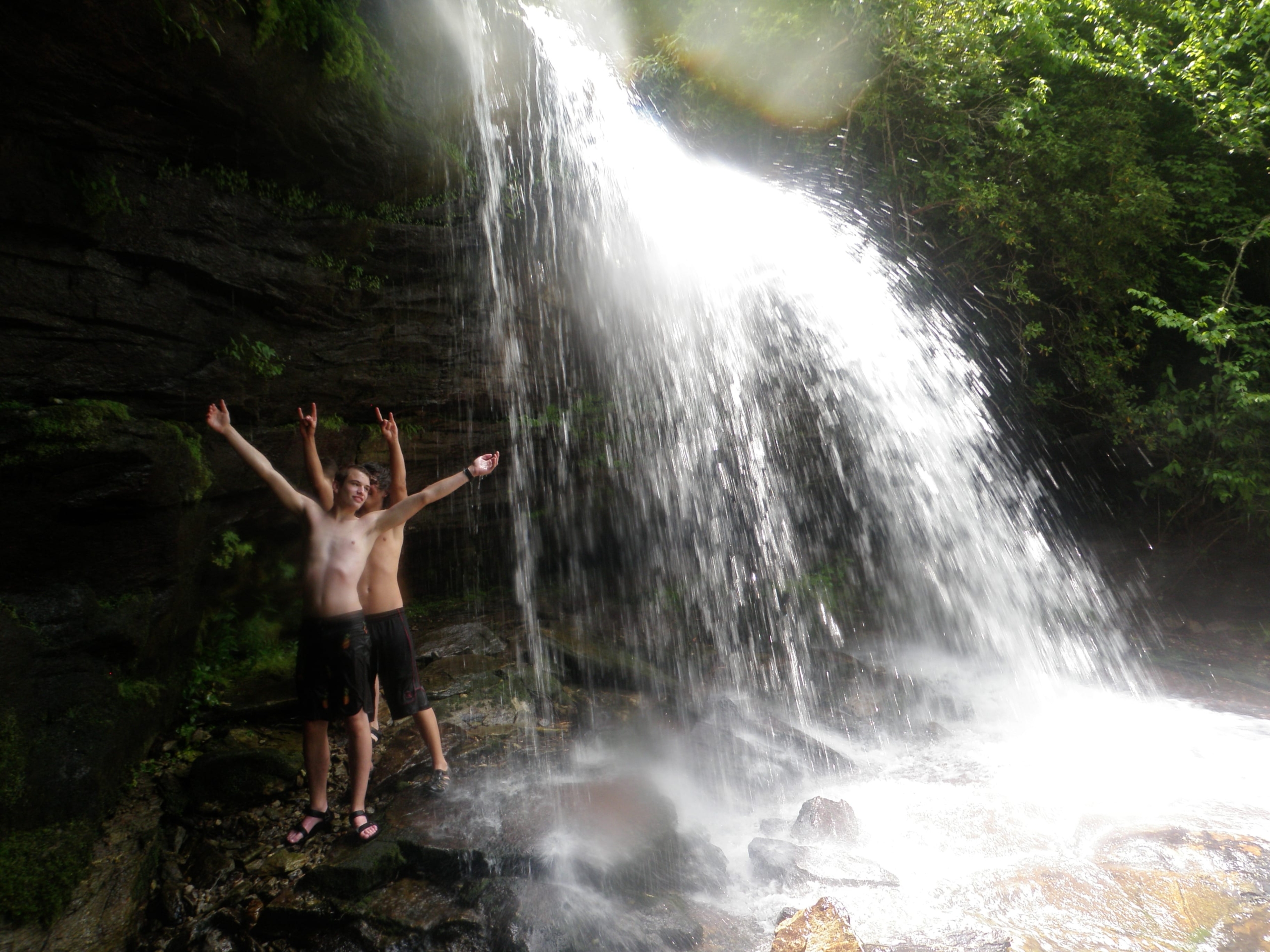 Waterfalls, waterfalls, waterfalls! There are as many as 1,500 waterfalls in North Carolina, and the other area in which we backpack, Panthertown Valley, houses at least eight of the prettiest ones. Students will have the chance to stop and swim around beneath the larger falls, including Schoolhouse Falls (pictured). There’s no better way to cool off on a hot day than having “splash wars” in crystal-clear swimming holes next to sandy beaches! Panthertown, a 6,700-acre tract of gorgeous wilderness, also contains huge granite domes, validating its nickname “Yosemite of the East.”
Waterfalls, waterfalls, waterfalls! There are as many as 1,500 waterfalls in North Carolina, and the other area in which we backpack, Panthertown Valley, houses at least eight of the prettiest ones. Students will have the chance to stop and swim around beneath the larger falls, including Schoolhouse Falls (pictured). There’s no better way to cool off on a hot day than having “splash wars” in crystal-clear swimming holes next to sandy beaches! Panthertown, a 6,700-acre tract of gorgeous wilderness, also contains huge granite domes, validating its nickname “Yosemite of the East.” More water! Just as impressive as our host of waterfalls is the sheer volume of rivers running through western North Carolina. Known as a hotbed for boating enthusiasts, our students spend five to six days inflatable kayaking, canoeing, and whitewater rafting the great waterways of the region. The Chattooga River, the first river east of the Mississippi to be designated a Wild and Scenic River, has some of the most exciting rapids we paddle. They’ll also hop into inflatable kayaks, aka “duckies,” down the Nantahala River, culminating with the optional drop down the dramatic, class 3 Nantahala Falls. Finally, Blue Ridge students will learn and hone canoeing skills on either the serene Lake Santeetlah (pictured) or the French Broad River, which is the third-oldest river in the world!
More water! Just as impressive as our host of waterfalls is the sheer volume of rivers running through western North Carolina. Known as a hotbed for boating enthusiasts, our students spend five to six days inflatable kayaking, canoeing, and whitewater rafting the great waterways of the region. The Chattooga River, the first river east of the Mississippi to be designated a Wild and Scenic River, has some of the most exciting rapids we paddle. They’ll also hop into inflatable kayaks, aka “duckies,” down the Nantahala River, culminating with the optional drop down the dramatic, class 3 Nantahala Falls. Finally, Blue Ridge students will learn and hone canoeing skills on either the serene Lake Santeetlah (pictured) or the French Broad River, which is the third-oldest river in the world!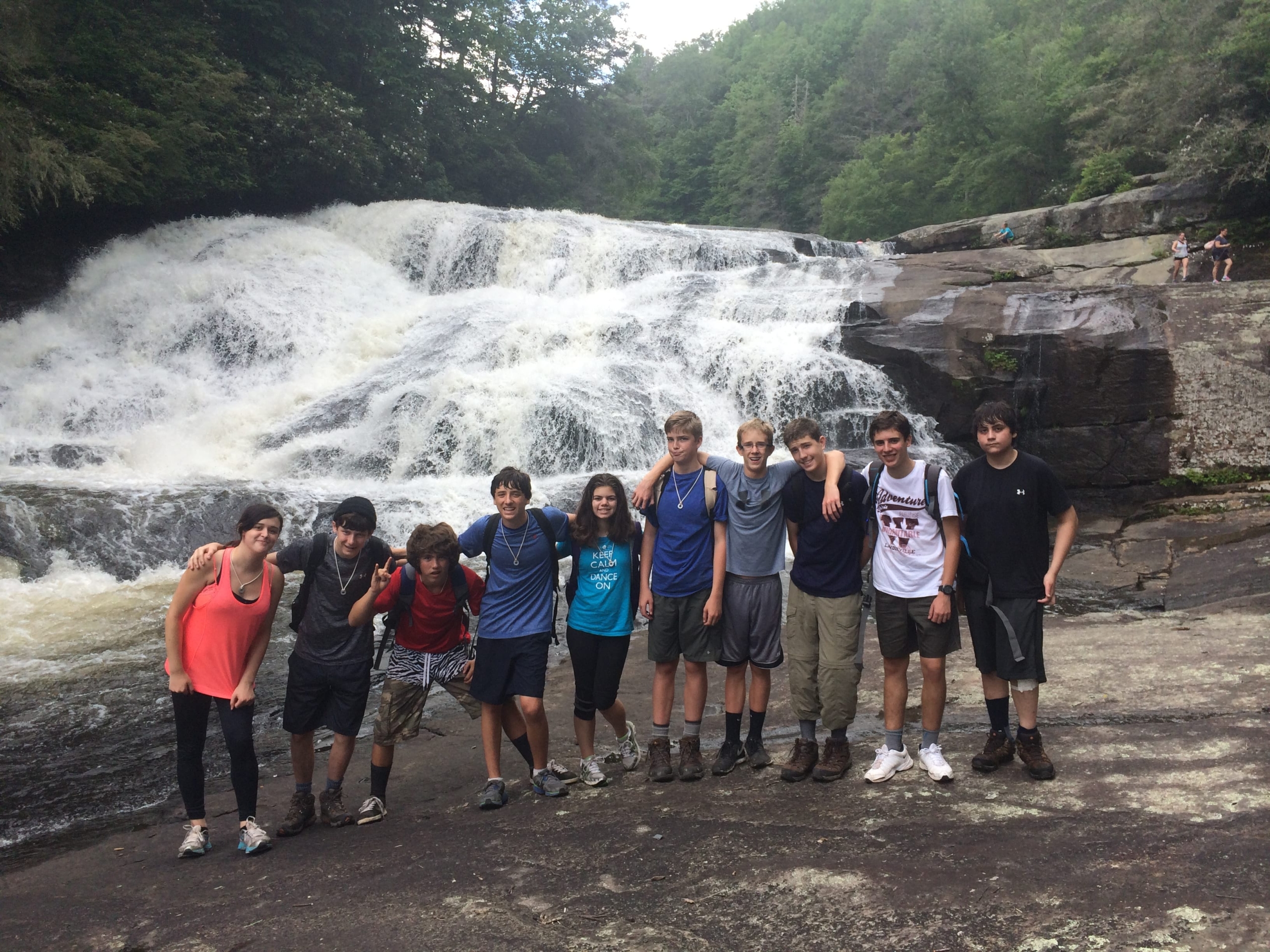 Chances are your teenager has seen the movie The Hunger Games, and it’s also likely that your teenagers knows that filming took place all over western North Carolina. On the Blue Ridge Explorer, our students mountain bike through DuPont State Forest, where some of the more memorable movie scenes take place at Triple Falls (pictured) and Bridal Veil Falls. DuPont’s single-track trails attract mountain bikers of all skill levels, and many of its trails offer something that most Appalachian forests don’t: slickrock, i.e. smooth, wind-polish rock trails, that wind through beautiful waterfalls and rare habitats like high-elevation bogs.
Chances are your teenager has seen the movie The Hunger Games, and it’s also likely that your teenagers knows that filming took place all over western North Carolina. On the Blue Ridge Explorer, our students mountain bike through DuPont State Forest, where some of the more memorable movie scenes take place at Triple Falls (pictured) and Bridal Veil Falls. DuPont’s single-track trails attract mountain bikers of all skill levels, and many of its trails offer something that most Appalachian forests don’t: slickrock, i.e. smooth, wind-polish rock trails, that wind through beautiful waterfalls and rare habitats like high-elevation bogs.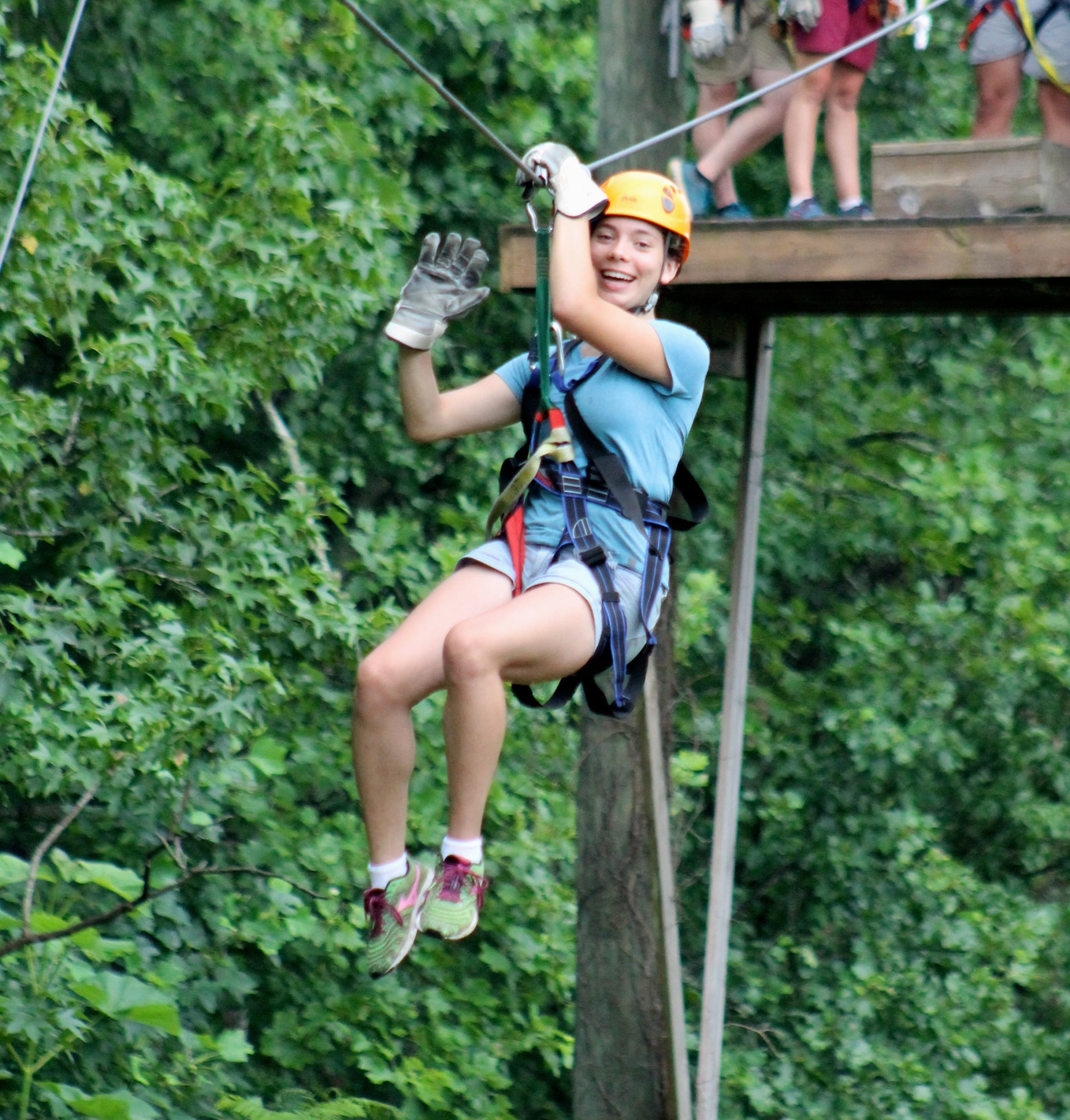 Last but not least, the wildly diverse ecological systems of North Carolina help make the Blue Ridge Explorer trip so memorable. Students will have a birds-eye view as they zipline through the Green River Gorge, whizzing through deciduous forests down 1,100 vertical feet. This gorge has some of the most dramatic landscapes of any area we visit in North Carolina, and is bursting with plant and animal life as one of the most bio-diverse regions in the eastern United States. This zipline is one of the fastest in the United States—the perfect end to a wonderfully fun trip.
Last but not least, the wildly diverse ecological systems of North Carolina help make the Blue Ridge Explorer trip so memorable. Students will have a birds-eye view as they zipline through the Green River Gorge, whizzing through deciduous forests down 1,100 vertical feet. This gorge has some of the most dramatic landscapes of any area we visit in North Carolina, and is bursting with plant and animal life as one of the most bio-diverse regions in the eastern United States. This zipline is one of the fastest in the United States—the perfect end to a wonderfully fun trip. University attended:
University attended: